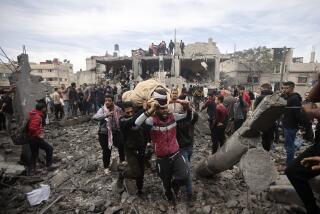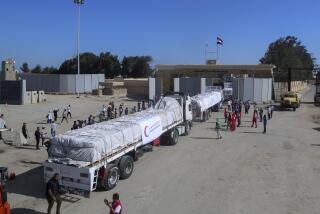Our View of the Third World Is Warped : Aid: We are fed a media diet of suffering, when real progress is being made; as a consequence, our spending is misdirected.
- Share via
If the past two years have taught us anything it is how haphazard--even thoughtless--is our attitude to suffering and deprivation--other peoples’ and our own as well.
Who has said more than half a dozen words about the killings in Burundi last week, or about Angola, which, for nearly 10 years, has been the most consistently awful hellhole on the face of the Earth? Neither has come in for a hundredth of the interest and concern for ex-Yugoslavia, or a 50th of that for Somalia.
We are too scattershot in our measurement of suffering, too beholden to early prejudices long after they’ve been overtaken by events and too easily manipulated by the exaggerated and relentless--but fickle--eye of television. The danger is a cumulative one. As we are fed a random diet of suffering based on misleading criteria of what is the most important, we lose over time not only our sense of discernment but also our self-confidence in our ability to make intelligent priorities.
Nowhere is this flimsy reckoning more apparent than the way the inhabitants of the wealthy countries of Europe, North America and Japan perceive the rest of the world--the so-called developing countries--which are widely seen as corrupt, poverty-stricken disaster zones. Even where there is some truth in this caricature, as in Africa, it is wide of the mark. And for the overwhelming majority of the Third World, who live in Asia and Latin America, most of it is just plain nonsense.
In reality, in little more than a generation, average real incomes in the Third World have more than doubled; child death rates have been more than halved; malnutrition rates have fallen by 30%; life expectancy has increased by about a third; the proportion of children enrolled in primary school has risen from less than a half to more than three-quarters, and the percentage of rural families with access to safe water has risen from less than 10% to more than 60%. In the meantime, the proportion of couples using modern contraceptives has risen from almost nothing to more than 50%--in China it is 72% and Brazil 66%--and average family size is falling in almost every country.
Only a short 70 years ago, child death rates in the cities of the industrialized world were higher than the average for Africa today. In 1990, UNICEF’s World Summit for Children set a target of reducing child death rates to 70 per 1,000 births in all countries by the end of the century. Spain and Italy didn’t achieve that target until the 1960s, but well over half of the developing countries, only three years into this timetable, have already reached it. In the 1960s, the under-5 mortality rate in Europe was higher than in most of South America today.
Ignorance of what progress has been made extends right up to the highest levels of policy-making. If the quality of life can be improved so rapidly, how is it that Western aid agencies allocate less than 10% of their expenditure in this direction--to meeting the most pressing needs of the poorest--primary health care and education, clean water, safe sanitation and family planning? President Clinton has just tabled a new foreign-aid bill that, while radically rewriting some of the traditional priorities, does not appear to have grasped this point.
If only we could face facts, rather than accepting so glibly the misleading information others choose to feed us, how much more productive--and happier--we would probably be.
More to Read
Sign up for Essential California
The most important California stories and recommendations in your inbox every morning.
You may occasionally receive promotional content from the Los Angeles Times.










